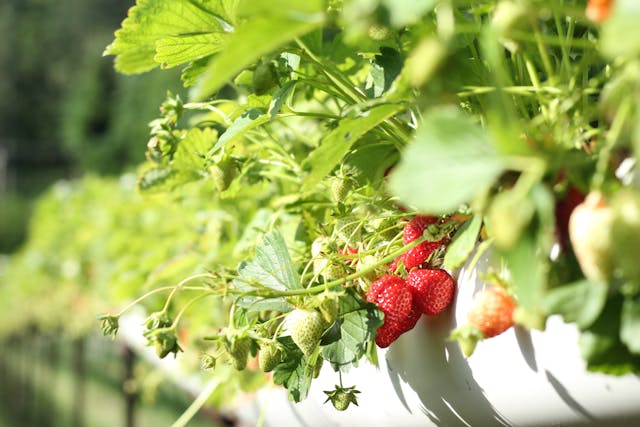Physical Address
304 North Cardinal St.
Dorchester Center, MA 02124
Physical Address
304 North Cardinal St.
Dorchester Center, MA 02124

Raised bed gardening is an excellent way to cultivate fruits, offering better soil control, improved drainage, and more efficient use of space. Whether you have poor-quality soil or want to extend your growing season, raised beds provide a practical and productive solution and there is The Ultimate Guide to Growing Fruits in Raised Beds.
In this guide, we’ll explore the best fruits to grow in raised beds, different types of raised beds, and the benefits of this gardening method.
Growing fruits in raised beds offers several advantages:
Before planting fruits, it’s important to choose the right raised bed structure based on your space and needs.
These beds are simple mounds of soil, typically 6 to 12 inches high. They are cost-effective and ideal for fruit trees and berry bushes.
Framed with materials like wood, stone, or metal, these beds provide better structure and durability. They are excellent for growing a variety of fruits.
Elevated raised beds, usually at least 2 feet high, improve accessibility and are great for smaller spaces like patios or balconies.

If you’re wondering which fruits thrive in raised beds, here are some of the best choices:
Strawberries are ideal for raised beds due to their shallow roots. Choose everbearing varieties for multiple harvests per year. Space plants 10 inches apart and keep the soil consistently moist.
Fig trees thrive in well-drained, nutrient-rich soil. Choose a sunny location and water regularly. Plant cuttings between September and April for optimal growth.
Resembling blueberries with a sweet-tart flavor, honeyberries grow well in cooler climates. They prefer well-drained soil and full sun.
Dwarf apple trees are perfect for raised beds. Spring planting is best, and young trees require consistent watering. For reliable fruiting, buy saplings from a local nursery rather than growing from seeds.
Ground cherries are easy to grow and highly productive, with each plant yielding up to 300 fruits. They require well-drained soil and about 2 inches of water per week.
Plum trees grow best in moist, well-drained soil. Spring planting is recommended, and mulching helps retain soil moisture.
For faster fruit production, plant a young tree rather than starting from seed. Peaches thrive in sandy, fertile soil with high phosphorus fertilizers.
These ornamental berries are easy to grow in raised beds. Plant them after the last spring frost, and expect fruit within 2–3 years.
Raspberries flourish in sandy loam soil enriched with compost. Keep plants 18–24 inches apart and apply mulch to retain moisture.
Watermelons require plenty of space and warm temperatures. Hay mulch helps control weeds, and the fruit is ready for harvest when the stem turns brown.
You can customize your soil mix with compost, manure, and organic matter to create the perfect growing environment.
Raised beds reduce the need for bending and kneeling, making gardening more accessible for seniors and those with mobility challenges.
Raised beds give your garden a neat and organized look. They also create clear walkways, making plant maintenance easier.
Good drainage prevents root rot and reduces the risk of fungal diseases, making raised beds ideal for areas with heavy rainfall or poor soil.
If you’re new to gardening, raised beds simplify plant care by allowing better control over soil, water, and nutrients.
Growing fruits in raised beds is an efficient and rewarding gardening method. With the right soil, location, and care, you can enjoy a bountiful harvest of fresh, delicious fruit right from your backyard. Whether you’re planting strawberries, apples, or watermelons, raised beds help maximize productivity while keeping maintenance manageable. Happy gardening with Sow Haven!